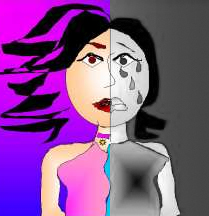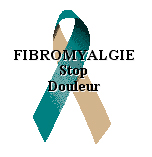
But what is fibromyalgia?
It is a disease that affects the muscles, tendons, and ligaments. Patients exhibit marked sensitivity upon digital palpation of 18 predetermined control points.
It causes chronic pain in the skeletal muscles, affecting the entire body throughout the day, reaching a peak at night.
This pain is accompanied by many other disorders including chronic fatigue, sleep disturbances, headaches, digestive disorders, memory issues, or even Raynaud’s disease.

Fibromyalgia, a condition affecting at least 1% of the French population, is a disease with poorly defined contours and causes. According to studies, it is associated with exposure to low-dose environmental pollution (pesticides, solvents, etc.). Investigations are necessary to better understand this disease and its causes: in light of the ministerial refusal to conduct them, associations are mobilizing and have approached the National Institute for Public Health Surveillance (I.N.V.S.)
Website of the UFAF: https://fibromyalgie.ufaf.free.fr
We thus find Victoria Pellegrini who is available for anyone suffering from fibromyalgia at 06.89.81.60.15.
Interview with Victoria Pellegrini
Nice Première: Victoria, can you explain to us what your disease, fibromyalgia, is in a few words?
Victoria Pellegrini: Fibromyalgia comes from the Latin fibro (fiber, tendons), myo (muscle), and the Greek algia (pain). Chronic pain affects the skeletal muscles, impacting the entire body, increasing throughout the day to reach a peak during the night. An abnormal sensitivity and pain of the muscles in 18 or more sensitive points of the body are felt during palpation.
This disease was recognized in 1992 by the WHO.
NP: What are the symptoms, and what treatments are available in France today?
VP: This pain is accompanied by many other disorders including chronic fatigue, sleep disturbances, headaches, digestive disorders, cystitis, and memory issues. Other symptoms include muscle spasms, tingling, skin tingling, sensations of swelling, burning, stiffness in the hands, chest pain, and sensitivity to light, cold, and climate changes, etc.
Difficulty walking and many other symptoms cause suffering.
To date, there is no curative treatment. Therefore, doctors primarily treat the symptoms of the disease using treatments intended for other illnesses (antidepressants, tranquilizers, benzodiazepines, etc.).
NP: How is this disease perceived by Social Security?
VP: Social Security does not recognize fibromyalgia as a long-term disease.
NP: Why is Fibromyalgia slow to be recognized as a long-term disease in France?
VP: I think maybe it’s a question of budget.
NP: What advice would you give to people with this disease?
VP: It’s difficult to give advice, but resuming gentle physical activity such as yoga, relaxation, or walking. Massages from a good physiotherapist. Psychological support is also important.
NP: Why is there no association in the region, while there are others elsewhere in France?
VP: It’s unfortunate that no association is present in the Alpes-Maritimes, but why, I don’t know.
NP: Finally, what do you ask from local officials to improve your daily journey against the disease?
VP: I am eagerly awaiting their help because only they can address the minister of health, the senate, the government. They can defend, help, and support all “fibromyalgia” patients so that this orphan disease is finally recognized by both the medical world and politicians.


